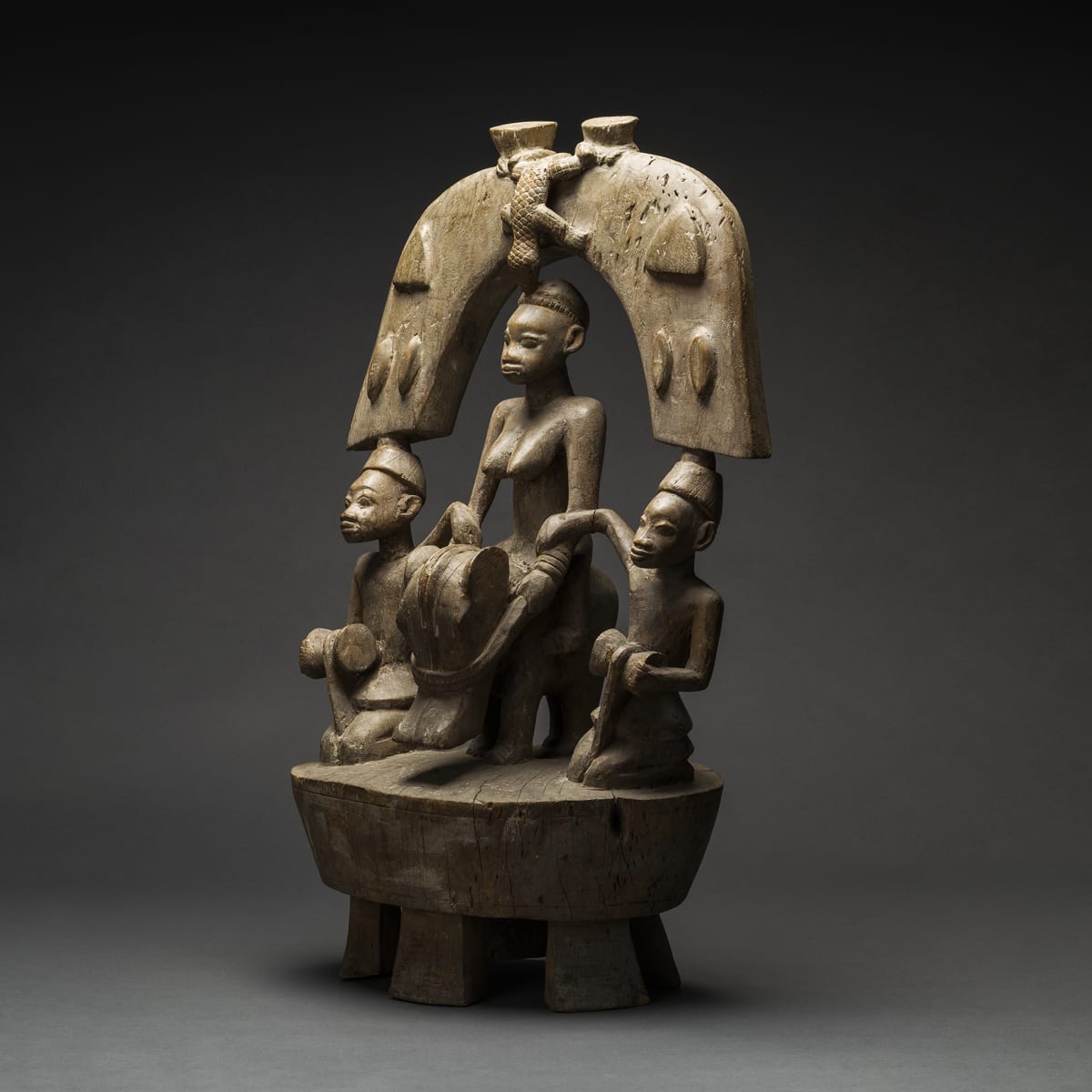Yoruba Shango Altar Piece, 1920 CE - 1960 CE
75.9 x 48.3 cm
29 7/8 x 19 1/8 in
29 7/8 x 19 1/8 in
LSO.577
Further images
The Yoruba are a Central Nigerian tribal group, originally descended from a Hausa migration from the northeast in about 900 AD. A small kingdom Ile Ife was founded by Oduduwa,...
The Yoruba are a Central Nigerian tribal group, originally descended from a Hausa migration from the northeast in about 900 AD. A small kingdom Ile Ife was founded by Oduduwa, followed by great sociopolitical expansion into Southwest Nigeria, Benin, and Togo. The influence of the city was felt far beyond these boundaries, however, and many smaller political entities were held under its sway. Communities were presided over by the Oba (king) and various senates (Ogboni), and councils made up of guild leaders, merchants and the lesser aristocracy (related to the Oba). The Yoruba have an exceptionally rich and diverse mythology, history and religious context, all of which are directly linked to their artistic output; in Yoruba society, this grouped heritage is known as the Itan. They also choose to decorate much of their secular materials from kitchenware to architectural pillars with ornately carved figurative and geometric designs. This piece is part of the magico-religious world, and would have originally have been part of an altar or religious shrine to Shango. This god of thunder and lightning is the most popular Orisha (a spiritous incarnation of the god Olodumare, which may be in any natural object or phenomenon) in the Yoruba pantheon of deities. He is said to be ancestral to the Yoruba people, and performs all kinds of functions within societies in Africa and the New World alike. He is also linked to twins and fertility, an issue of constant concern for the Yoruba as they have the highest twinning rate in the world. He controls the arts of dance and entertainment, of music and is represented by the oshe (double headed axe). His sacred number is 6 and he is master of the colours red and white. Worship of Shango is believed to bring with it a great deal of power and restraint to the worshipper, who further hold that Shango throws lightning bolts at his followers and thus leaves impressions of his axe on the earth that can be seen after rain. Shango worshippers tend to own dance wands that are displayed in their homes. While styles vary, most of them feature a female follower of Shango kneeling with paired lightning bolts and often an oshe behind their heads. The current piece refers to the same general function, but was designed as a public rather than private piece of religious statuary. Its grandiose nature is in itself different from most Shango cult items, but while the central, serene female worshipper is usually depicted kneeling, this one is astride an elephant. Clad in a decorated hat, several bracelets and a skirt, she is evidently young and apparently unperturbed by her irascible mount and the two soldiers kneeling beside her and gripping her wrists. She is framed with a large arc that resembles the lightning bolts usually seen on dance wands, which is itself decorated with two sets of three raised pellets and two posts. A lizard, finely decorated with hatched incised lines and the remains of pale pigment, is attached to these posts. It is tied into position by a pair of snakes, and is leaning over and kissing (?) the forehead of the central figure. The soldiers are carrying what appear to be oshe shango axes, and are dressed in quasi-military apparel topped off with askari hats. The elephant is depicted with bowed head, and is rendered with considerable expressionism and with an ornate bridle running around its head. The base is roughly oval and plain except for a single incised line around the top and hatching on the four legs. The relief parts of the figures and the base retain flecks of white paint or kaolin, and most of the elevated portions of the piece are polished with a handling patina. Condition is good, with some markings and minor damage commensurate with the age of the piece. This is an impressive and enigmatic piece of African art.







